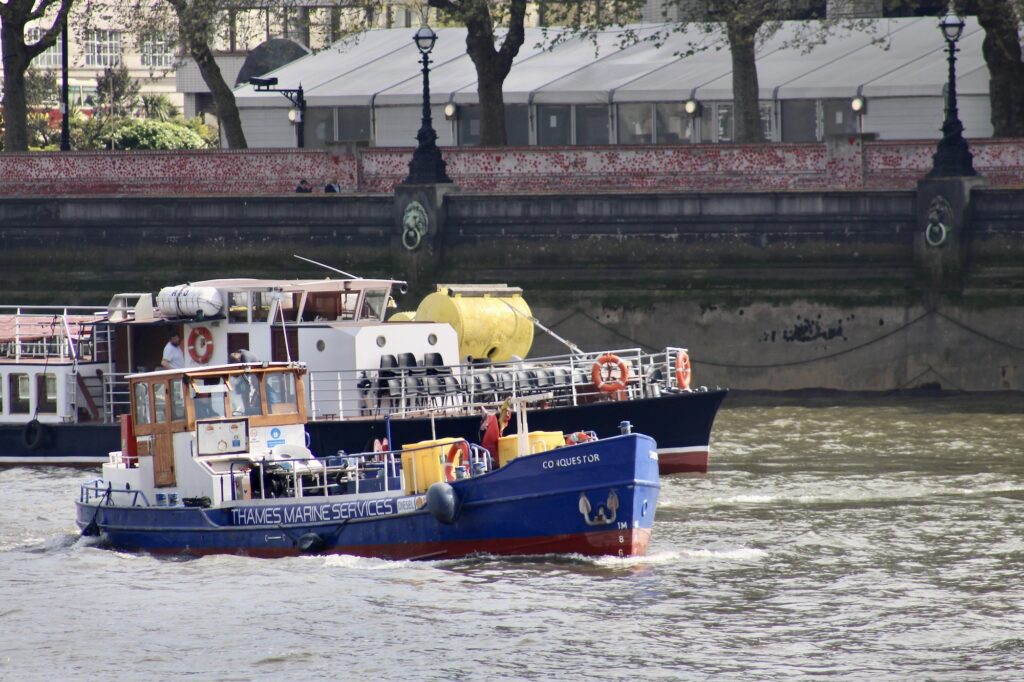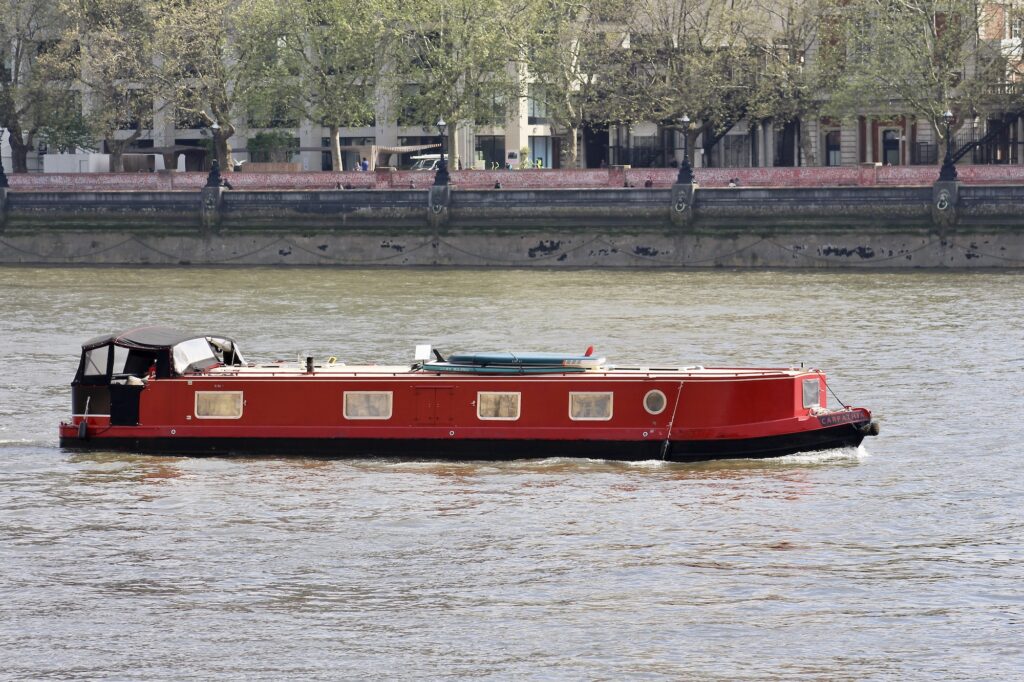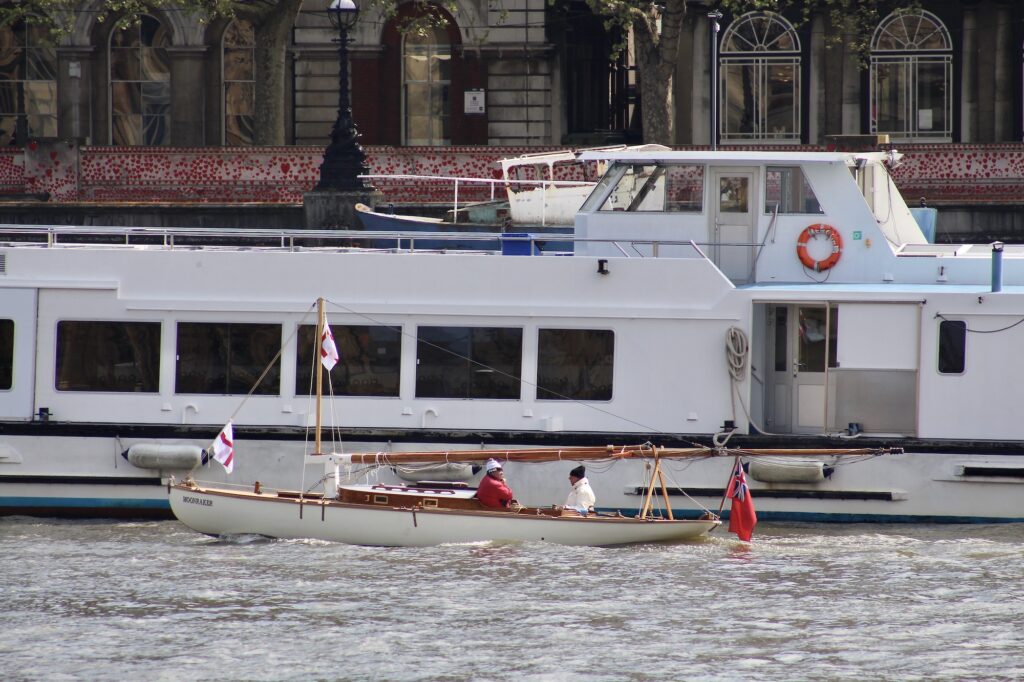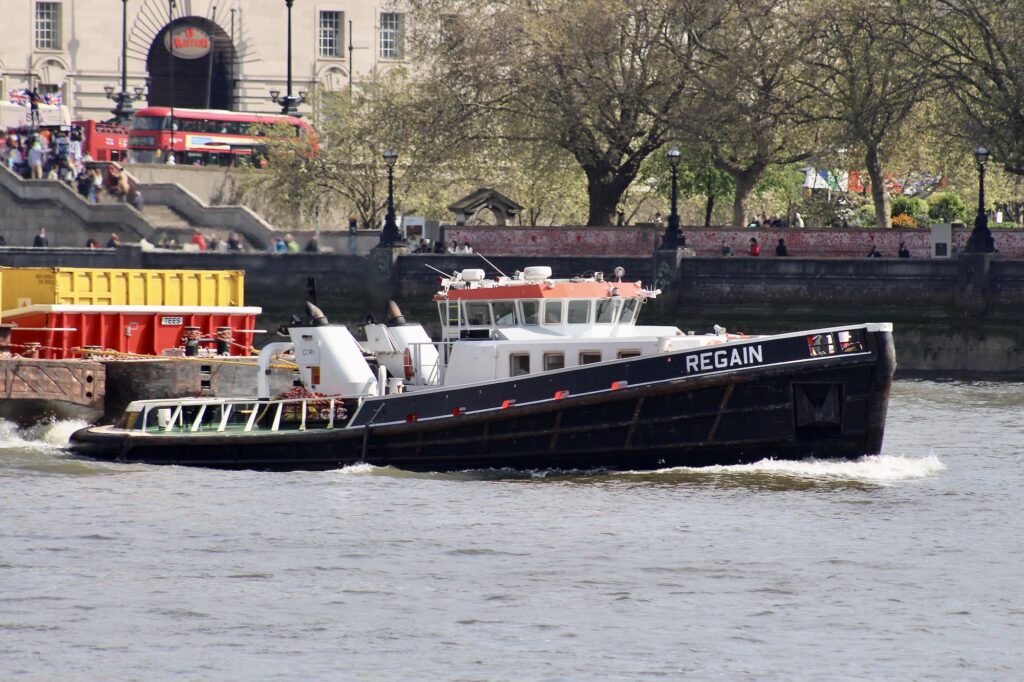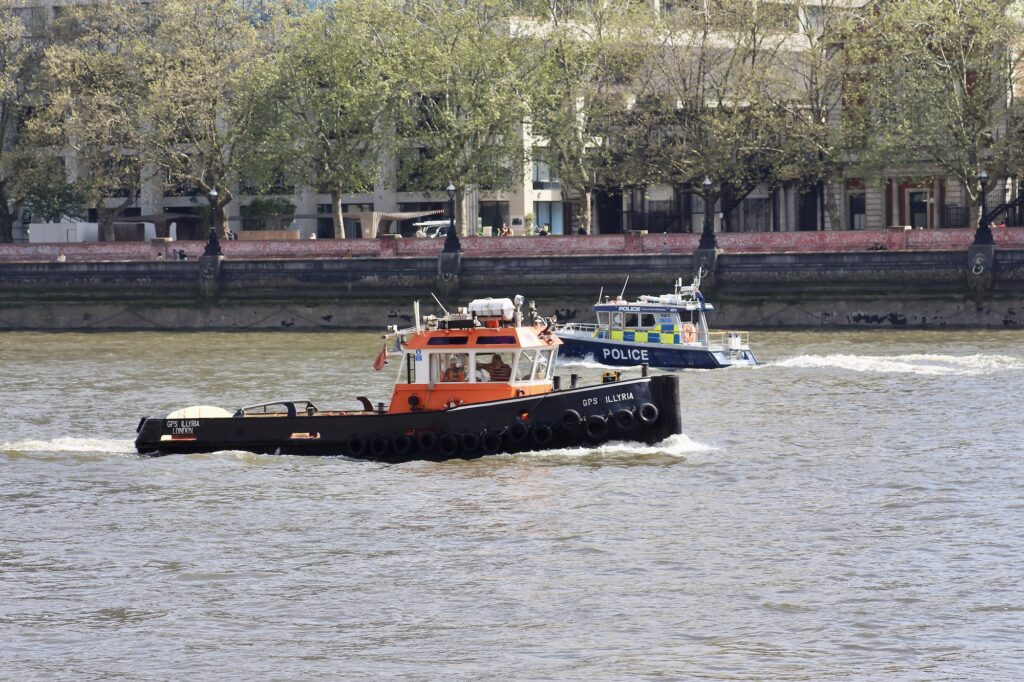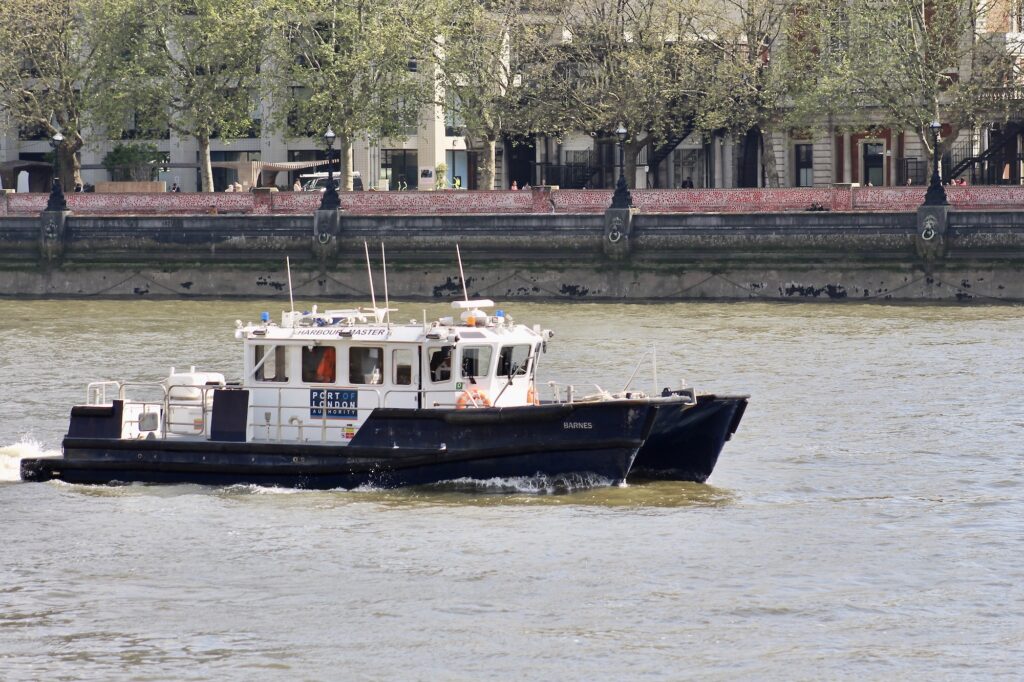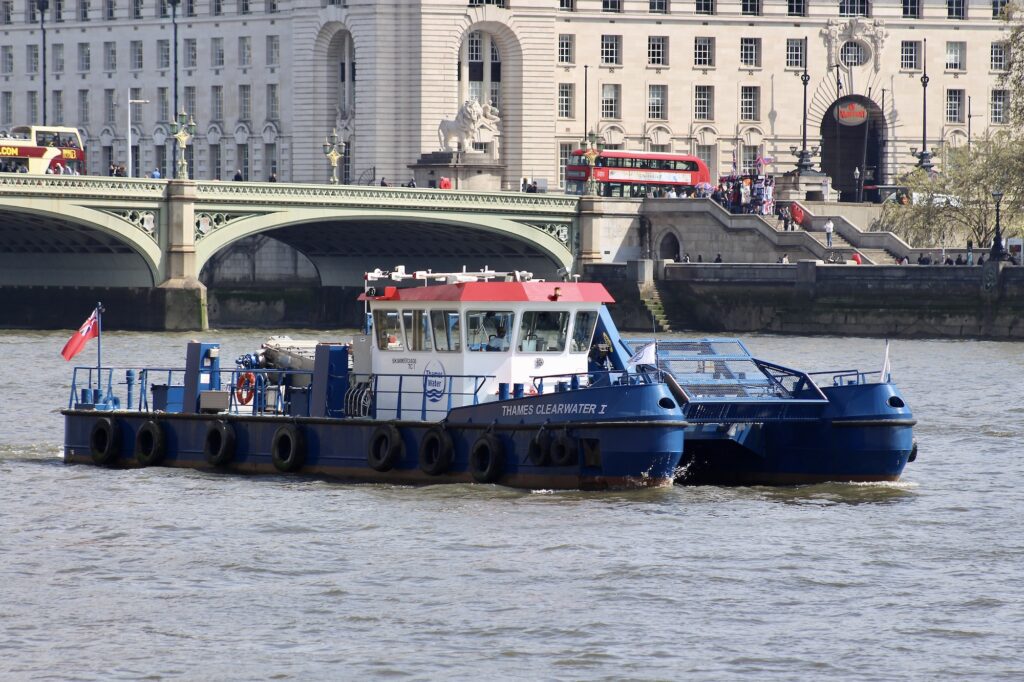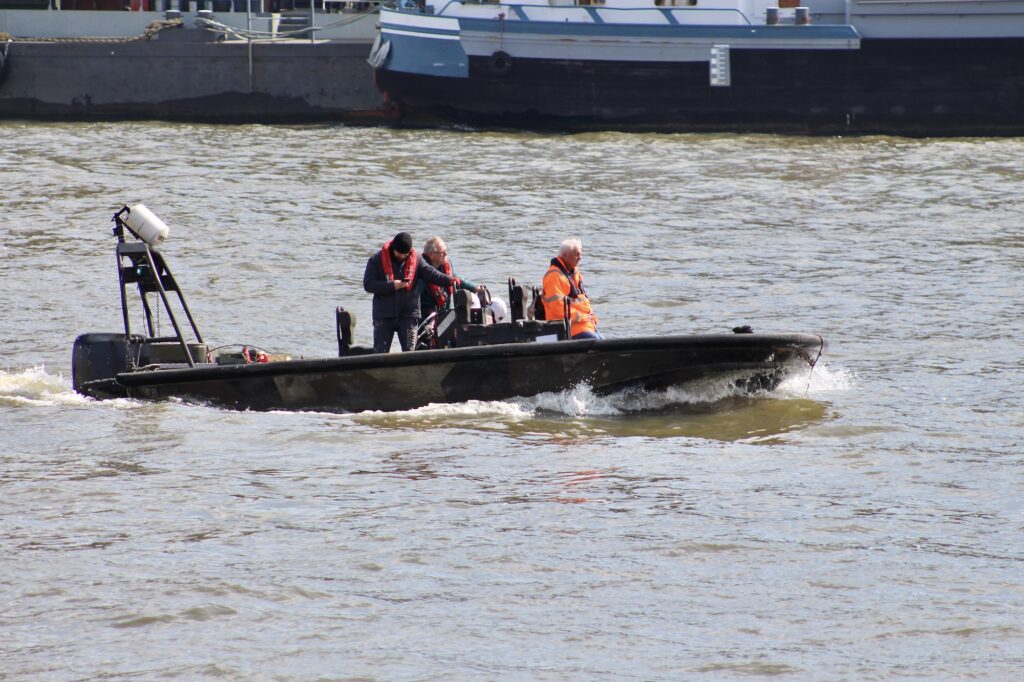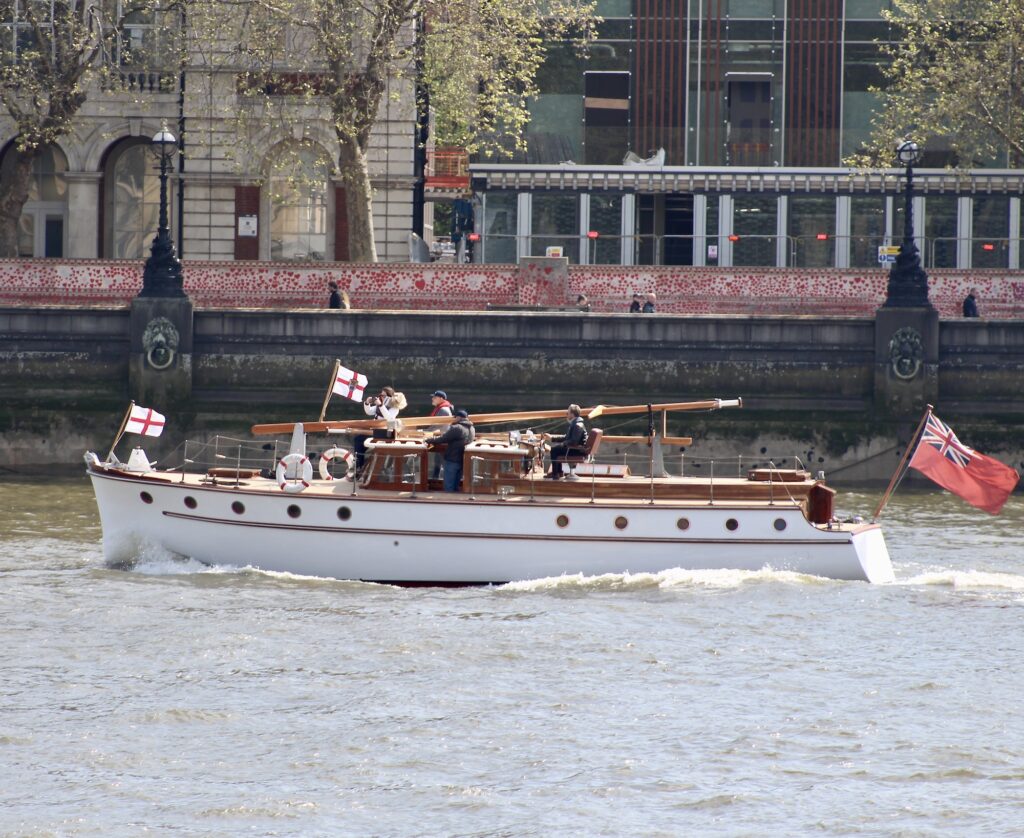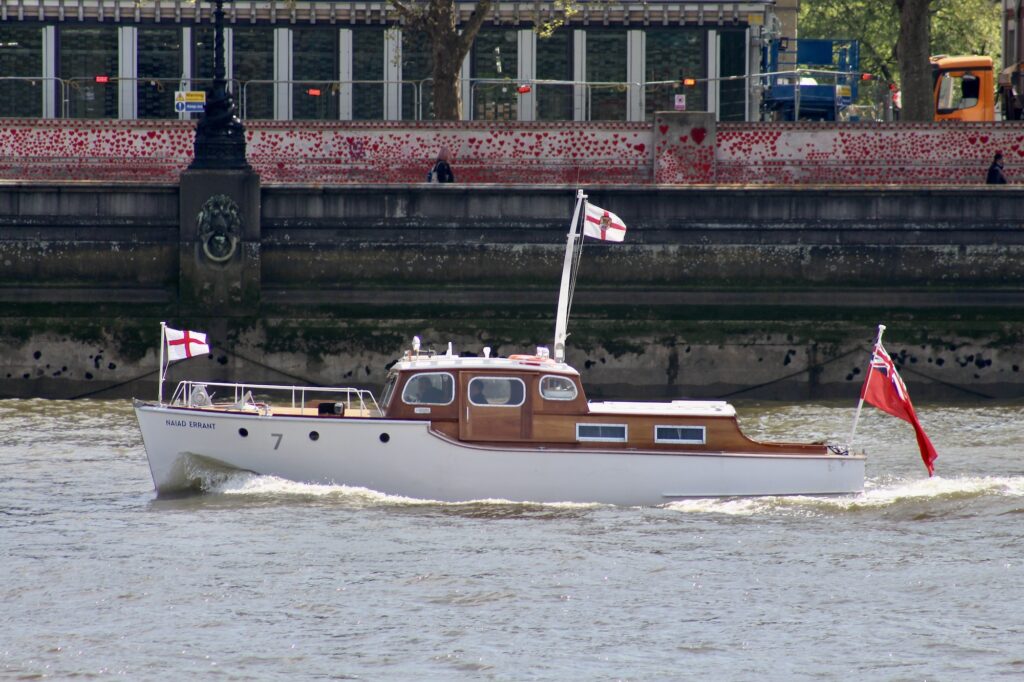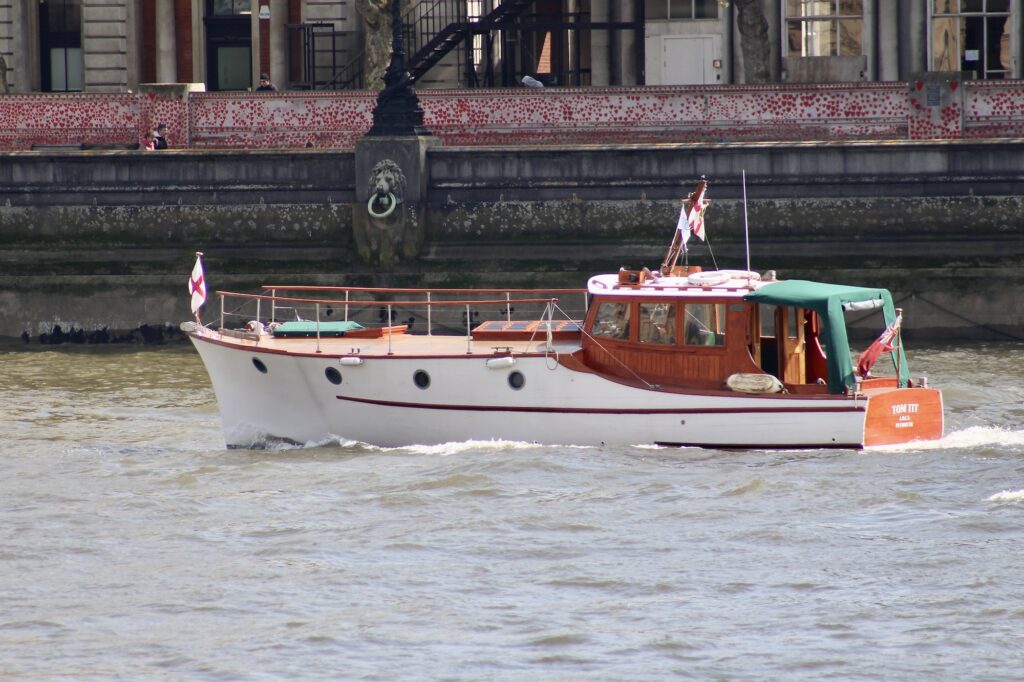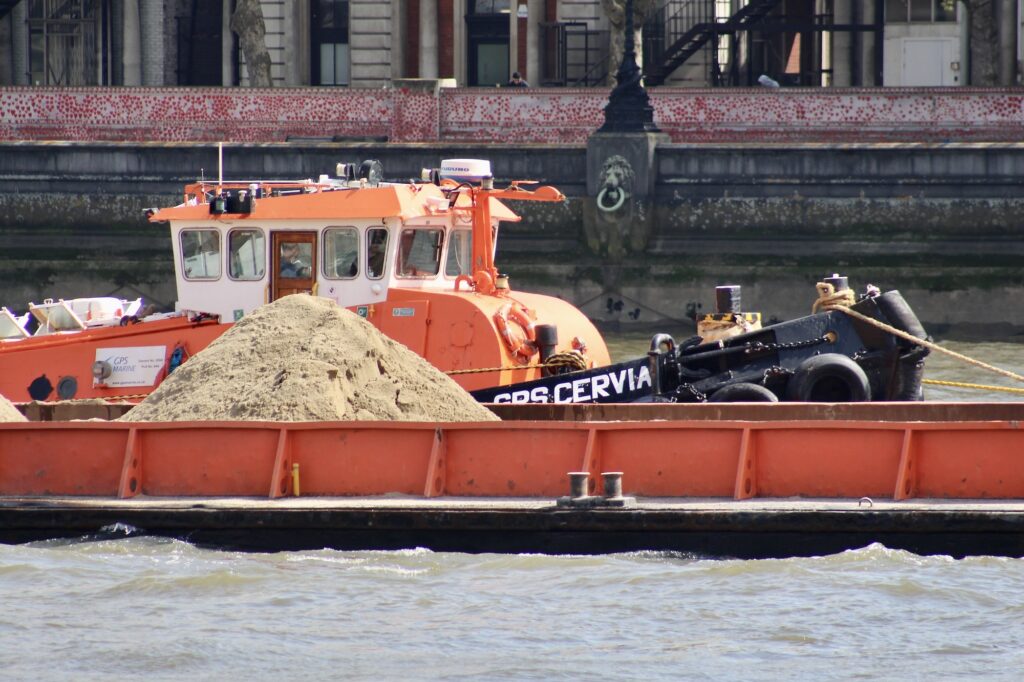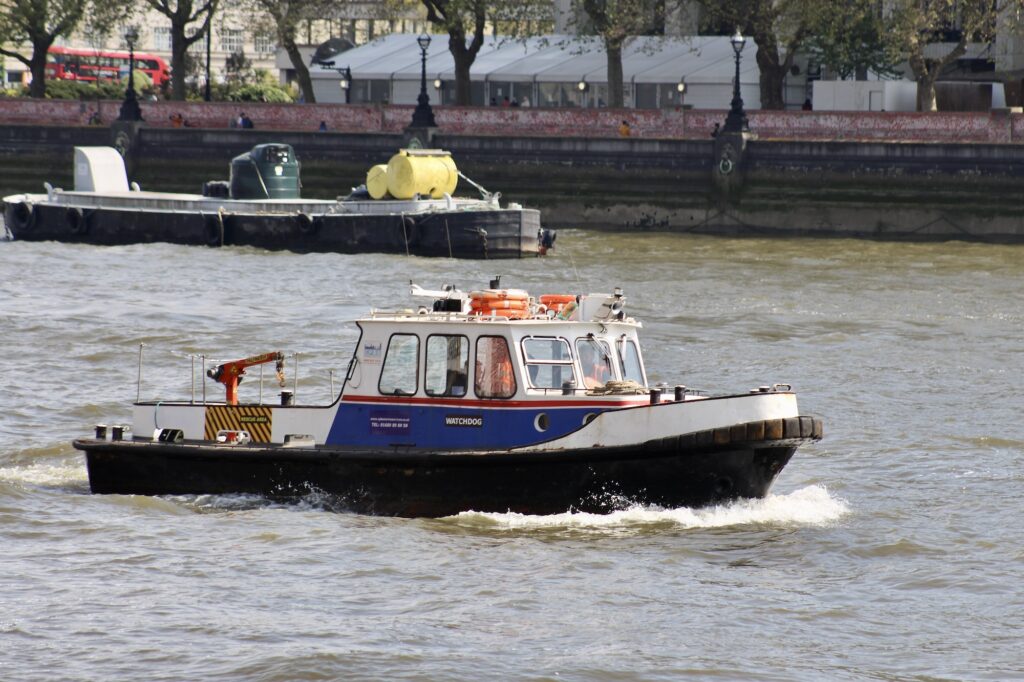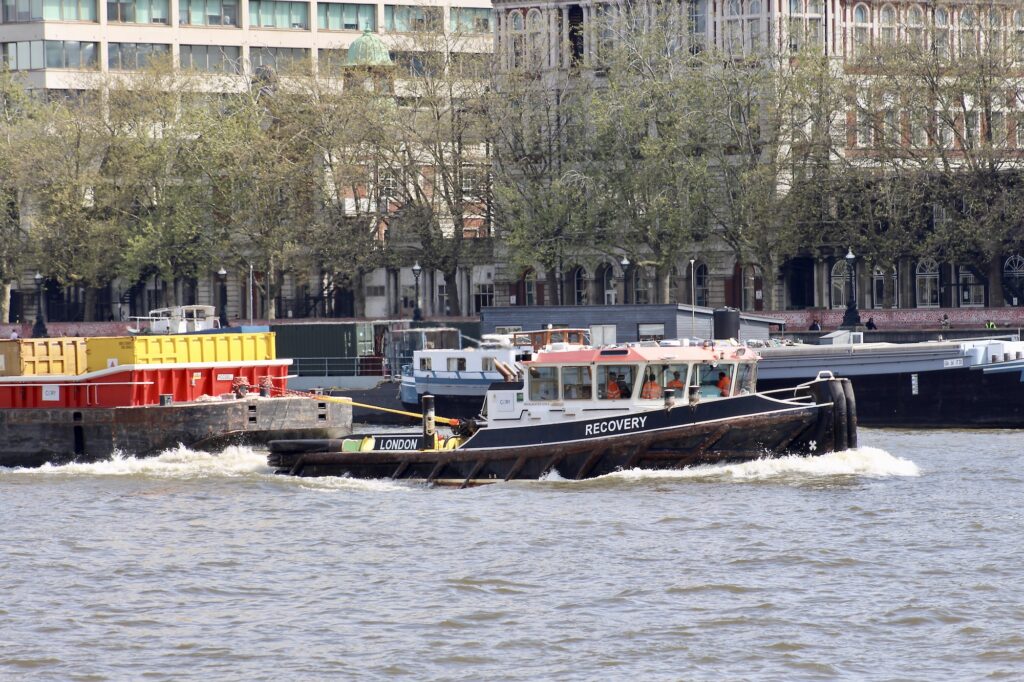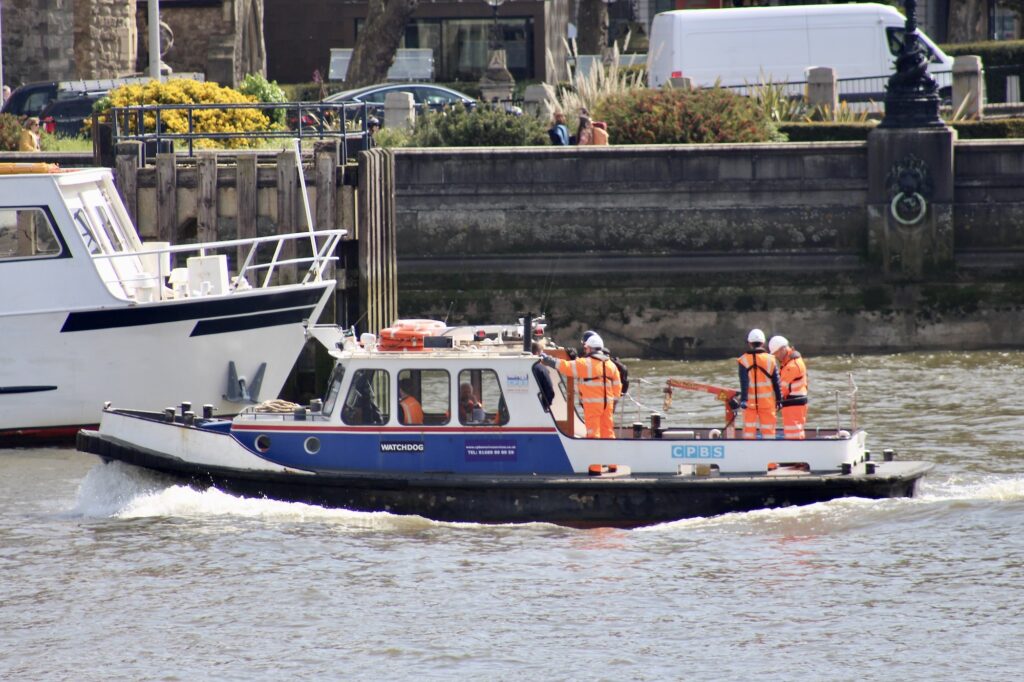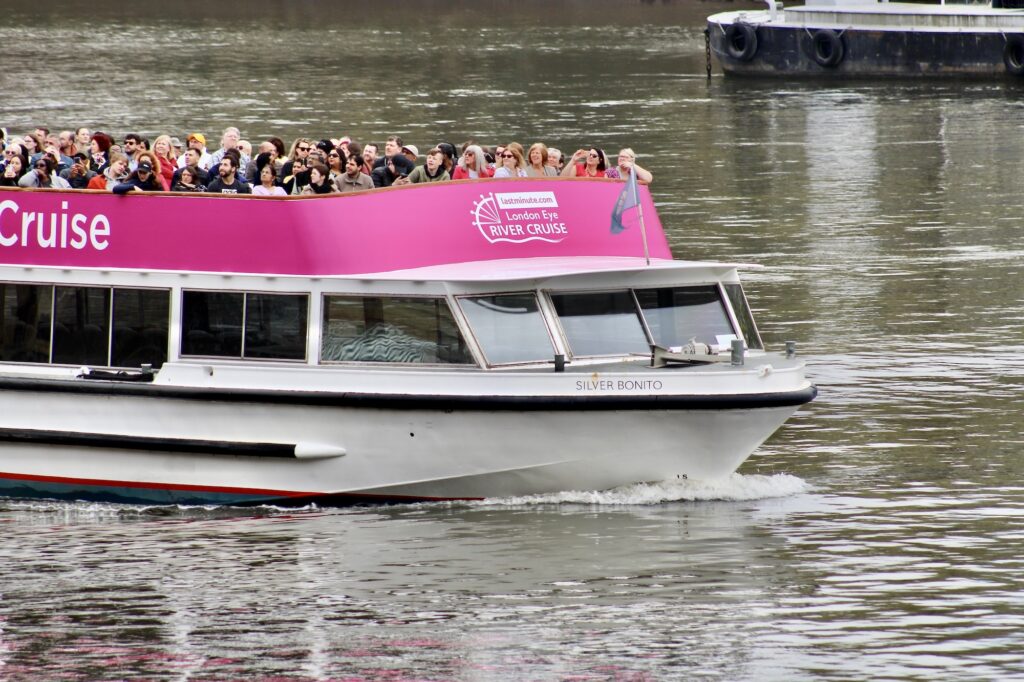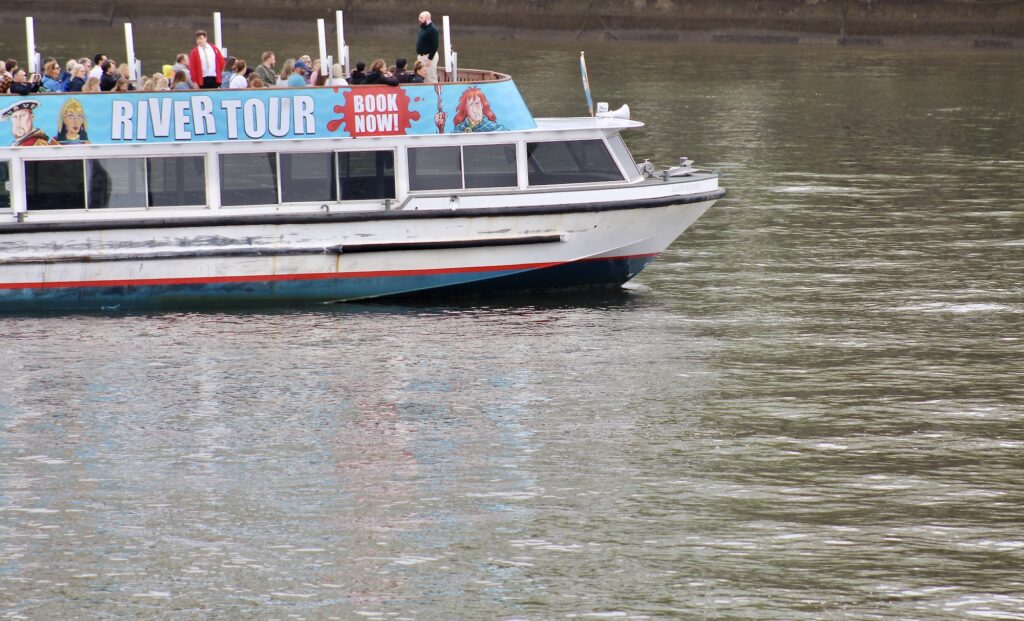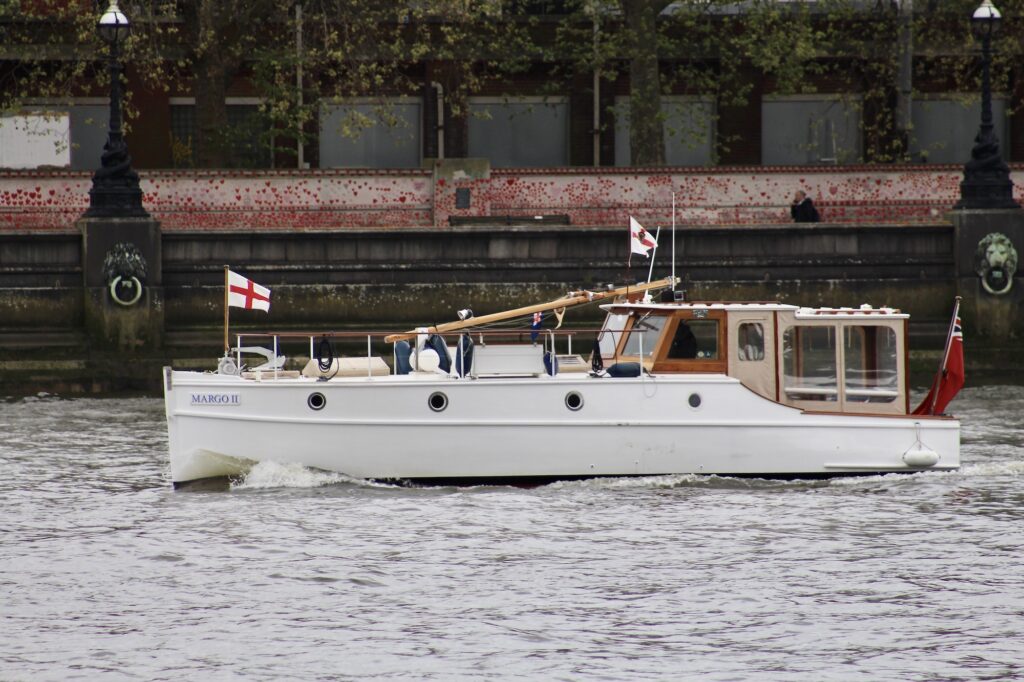
…King Charles III’s coronation.
The super human feat of rescuing 338,226 Allied soldiers stranded on the beaches of Dunkirk between May 26 and June 24, 1940 was described by Winston Churchill as a “miracle of deliverance”. A miracle partly carried out by a fleet of small boats co-opted by the Admiralty in a strategic evacuation known as “Operation Dynamo”. Their role was crucial as larger ships were unable to reach the shore so that the small boats, crewed mostly by volunteers, ran a *shuttle* service, bravely ferrying soldiers out from the beach to waiting ships, returning several times under heavy fire. And so mitigating the disastrous military situation.
The memory of their achievement is kept alive by the Association of Dunkirk Little Ships, formed to “preserve for posterity the memory and identity of those ‘Little Ships’ that went to the aid of the British Expeditionary Force in 1940”. The Association has a list of ships known to have taken part in the rescue, many of them still afloat, and organise or attend several events during the year.
On their way…
Though unplanned, I was lucky enough to be perched on a bench in Victoria Tower Gardens as a few of the Little Ships were passing downstream along Lambeth Reach towards St. Katharine Docks Marina, where they were to celebrate the Coronation of King Charles III on May 6, 2023.
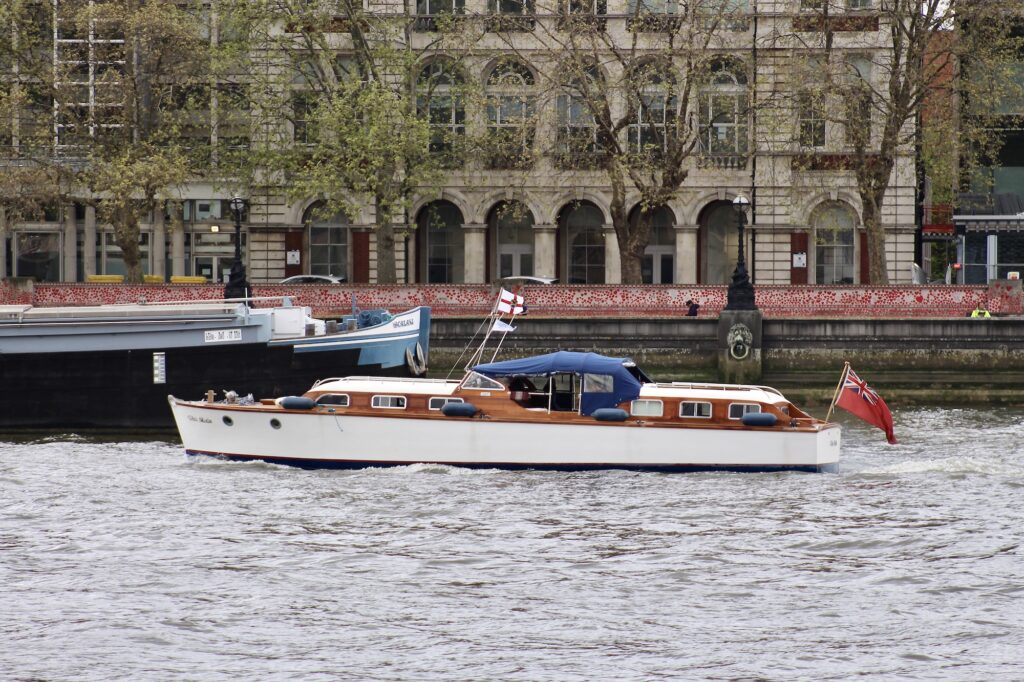
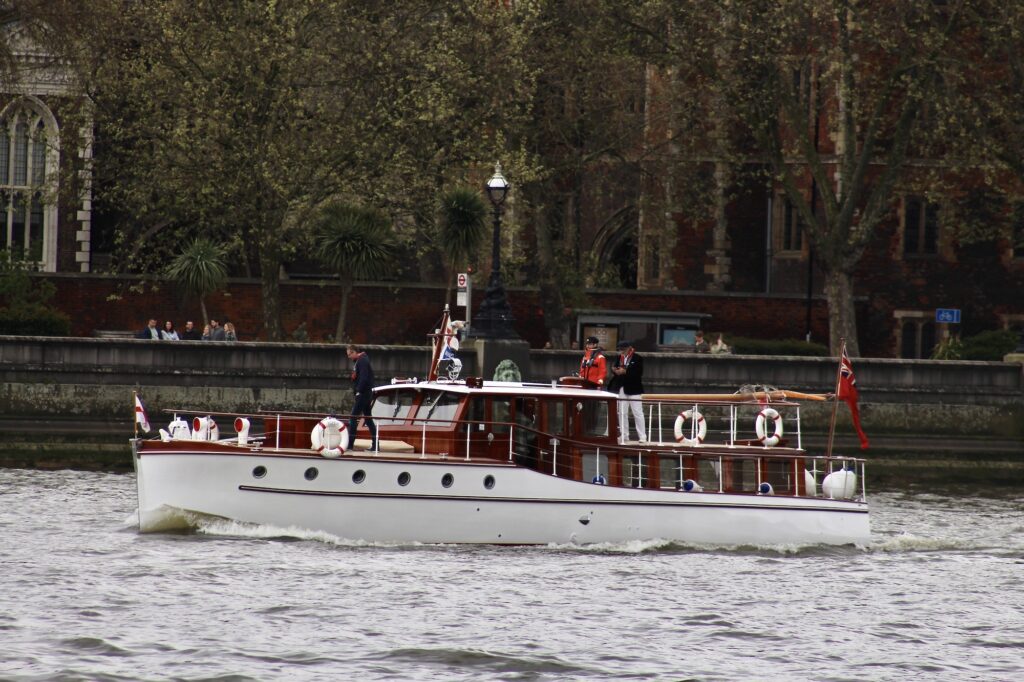
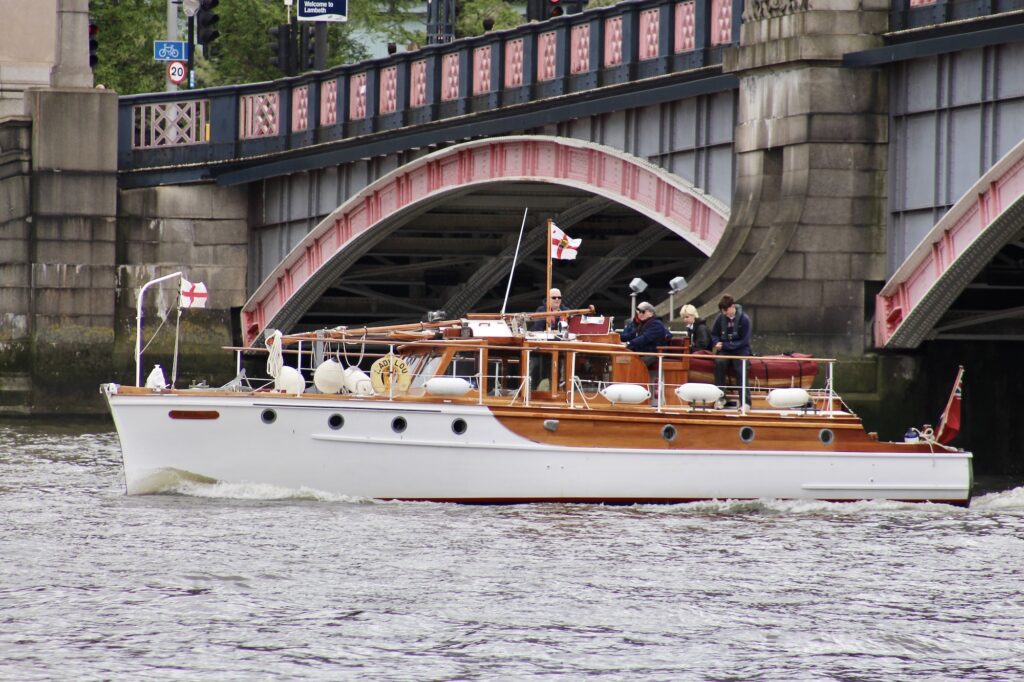
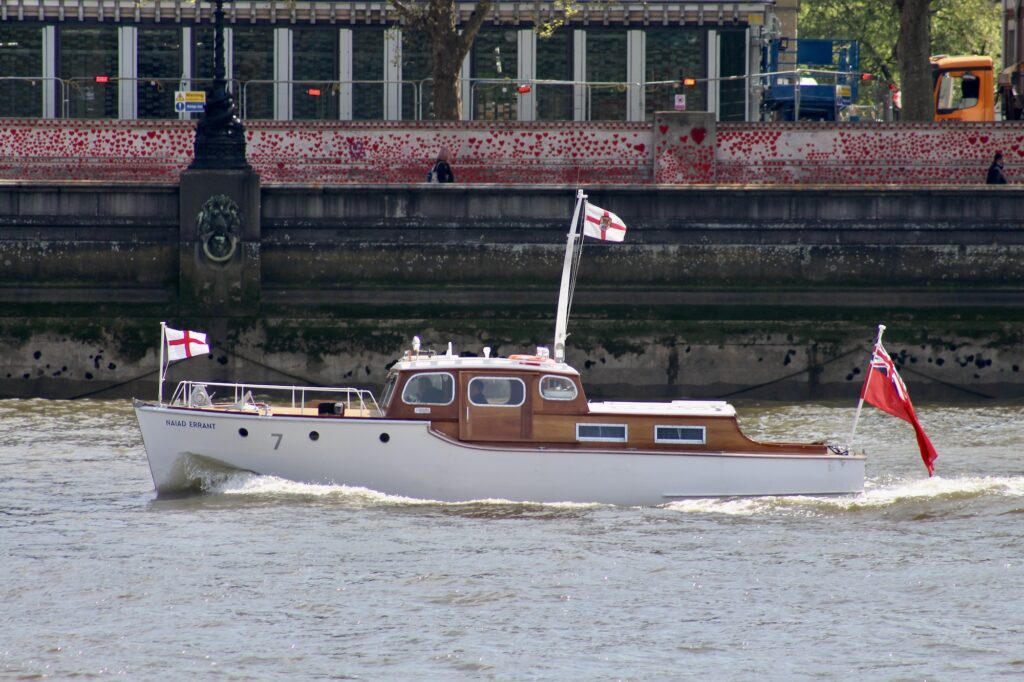
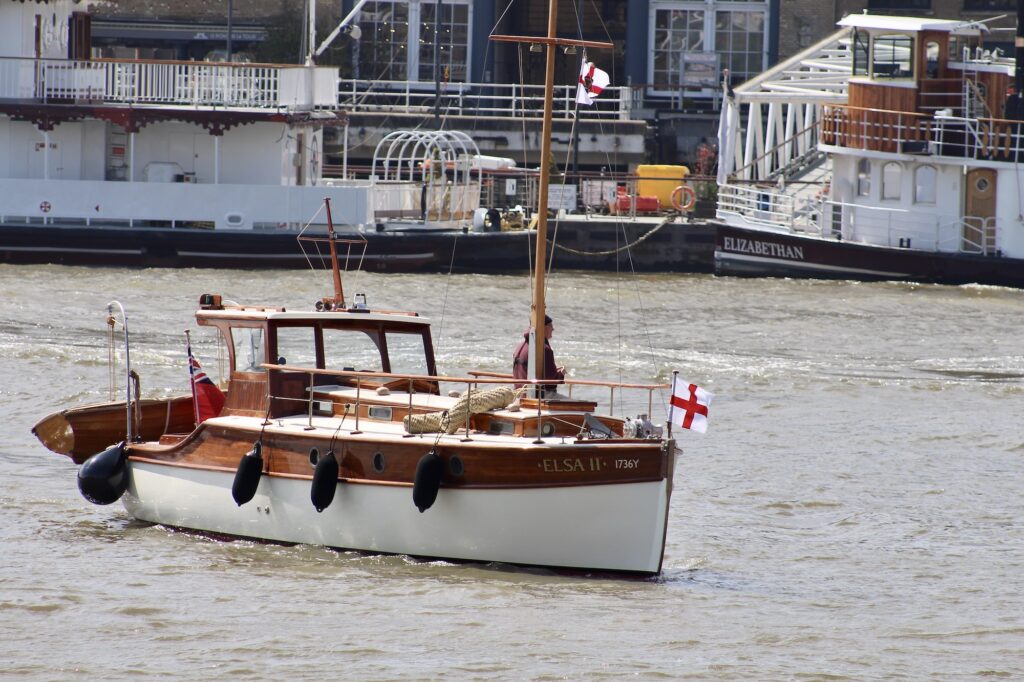
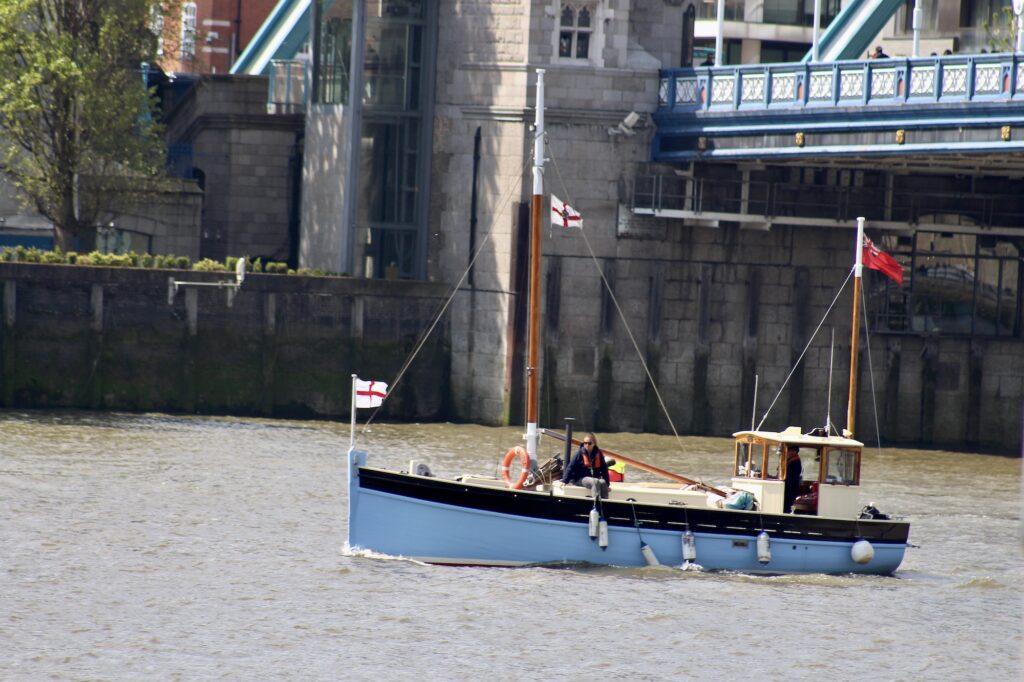
Moored in St. Katharine Docks Marina…
David Knight, skipper of MARGO II, one of the twenty-seven Little Ships taking part, explained:
“The Association of Dunkirk Little Ships were kindly invited by St. Katharine Docks Marina to spend the weekend of Charles III’s Coronation in London.
The opportunity to spend this momentous weekend on Margo II with a host of very good friends will remain a fond memory for years.
Many of those vessels taking part were from the non-tidal Upper Thames. Bringing these historic old wooden boats down through the Pool of London is never taken lightly. To get from Richmond to Tower Bridge for locking into the marina means leaving shortly after low water at Richmond and navigating through Sion Reach, often with only a few inches of water under us. It must be said that since speed restrictions were put in place above Tower Bridge the wash from the clippers and ribs is much reduced, making the passage much safer and more enjoyable. Everyone made a safe passage down and back up to Teddington with no problems.”
Each of the Little Ships had a panel giving details about them. The largest of the group was GRETA, a Thames sailing barge built in 1891-2, and the smallest was sailing sloop MOONRAKER, built in 1911.
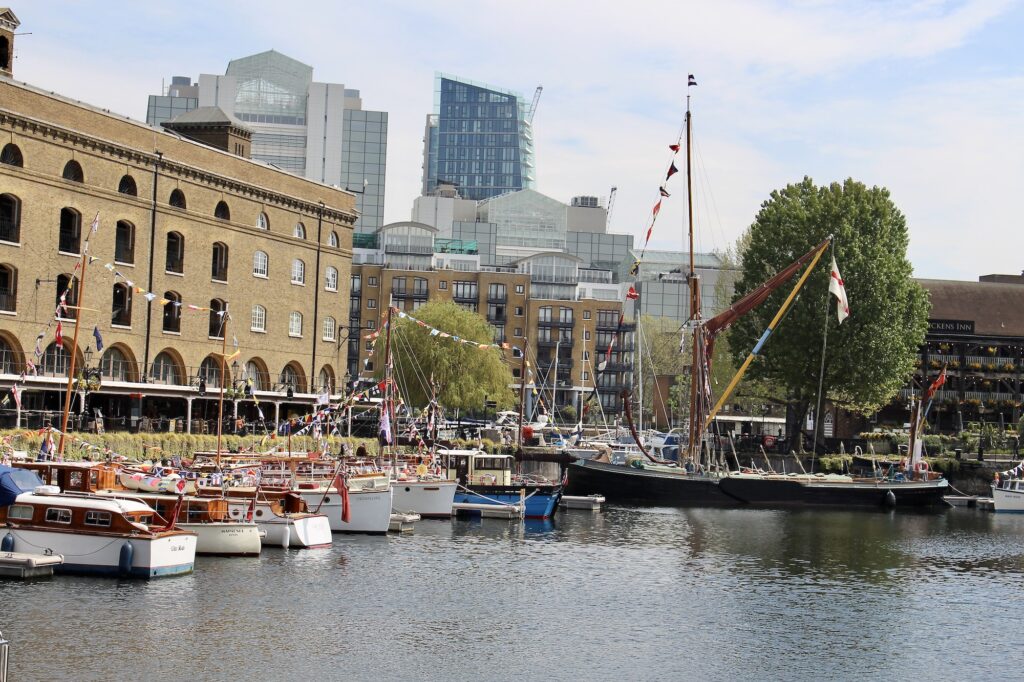
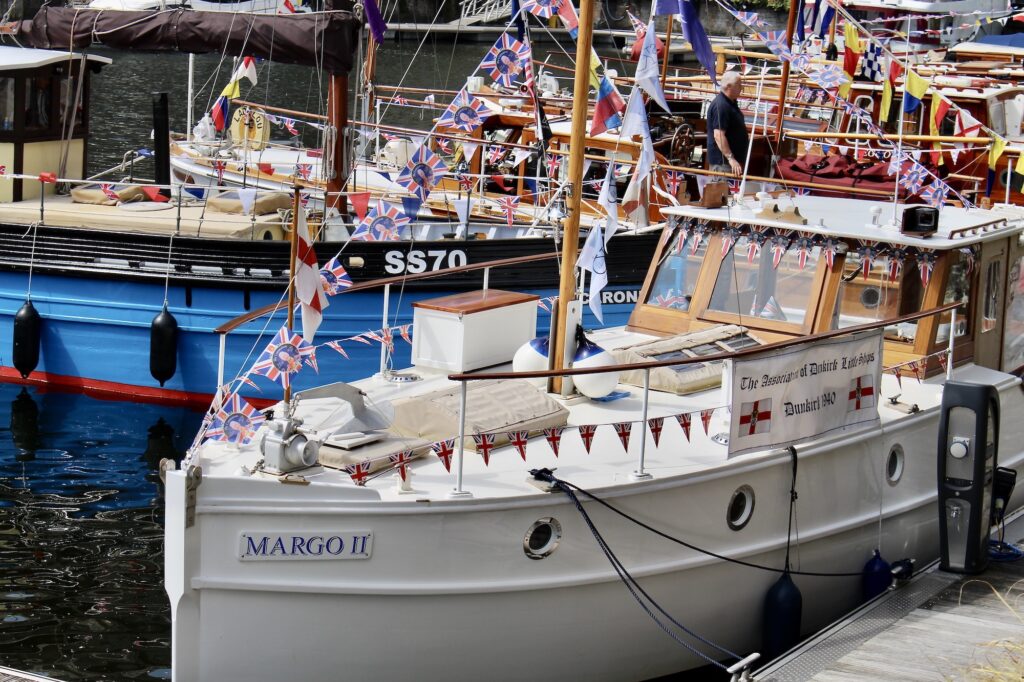

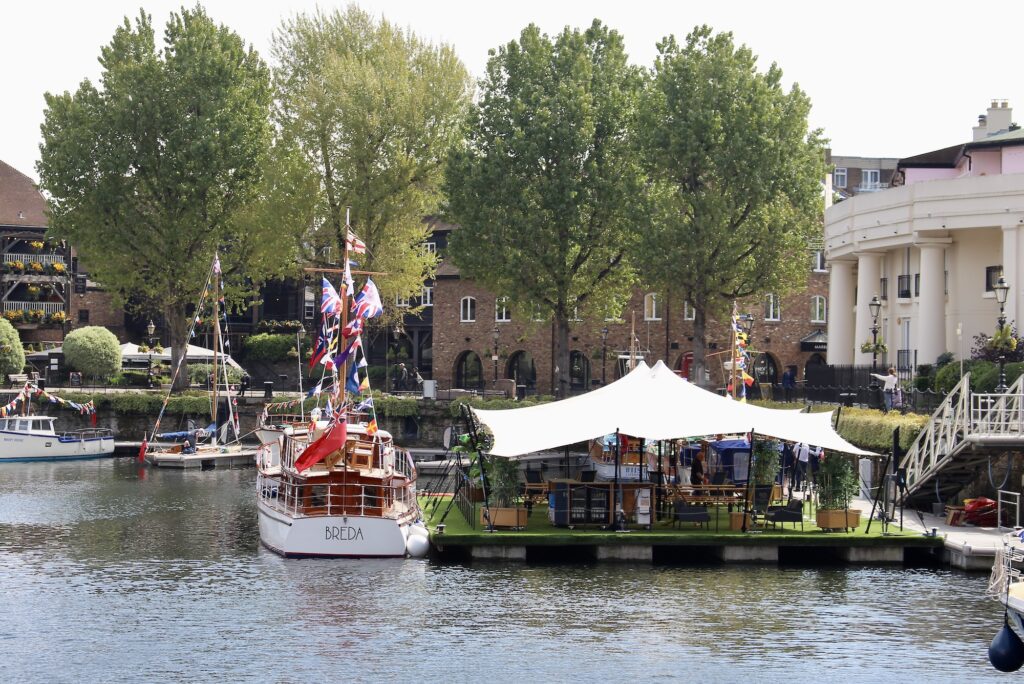
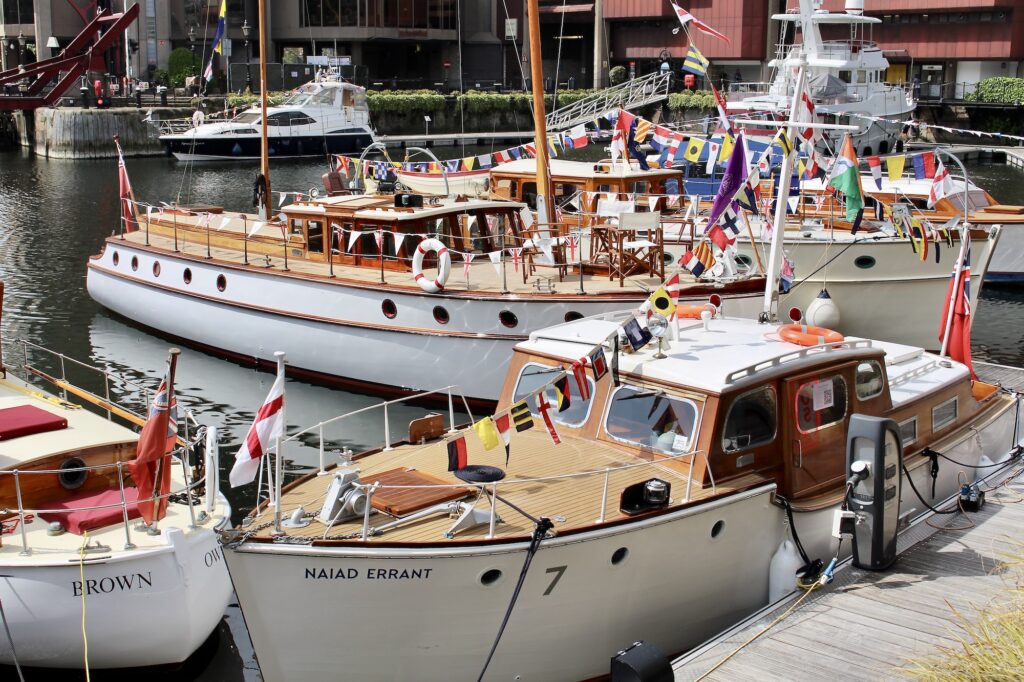



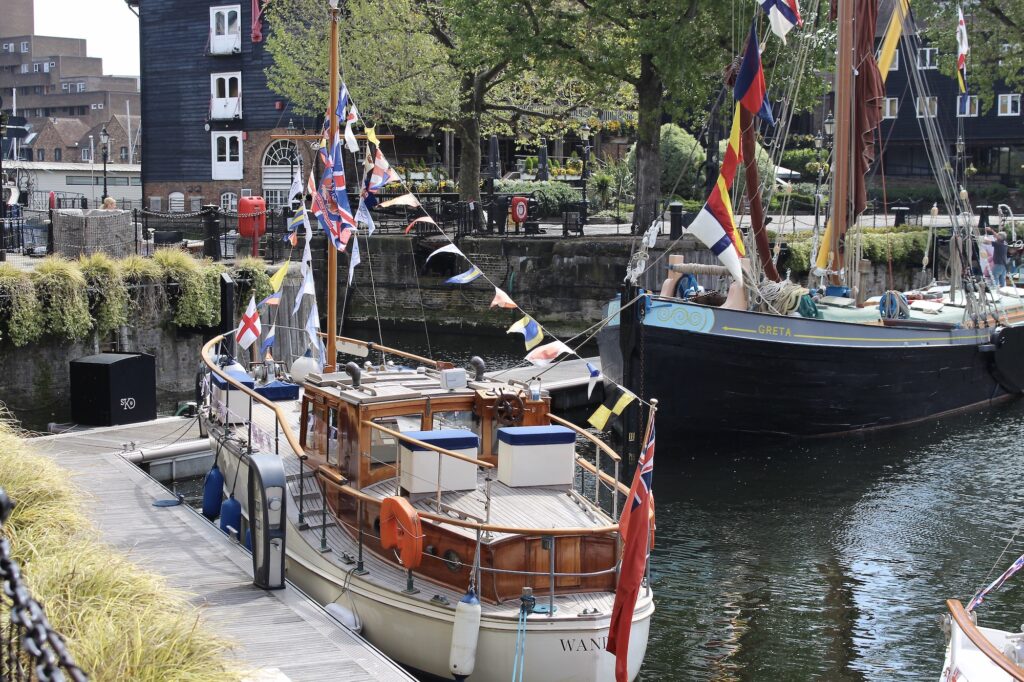
Some of the Little Ships on their way home…
A few days later, more by chance than by design, I happened to be standing on Lambeth Bridge as a familiar shape came into view. Then a mini flotilla of Little Ships. How small they looked on the London Thames, and their vulnerably at sea under the relentless fire they endured at the French coast, serves only to emphasise the courage of those skippers who rose to the challenge.
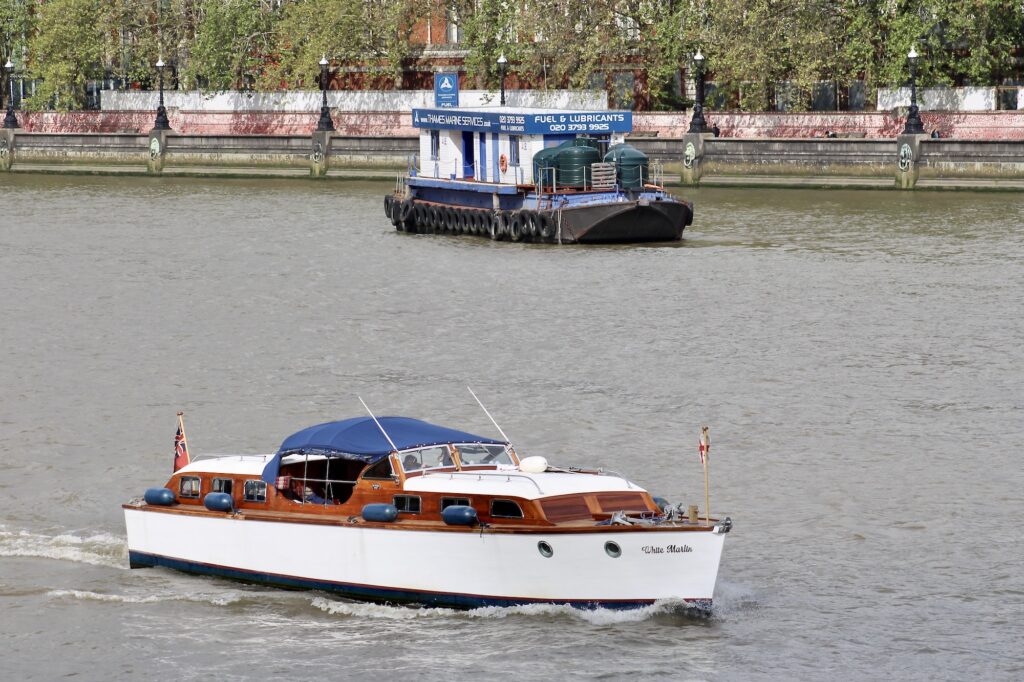
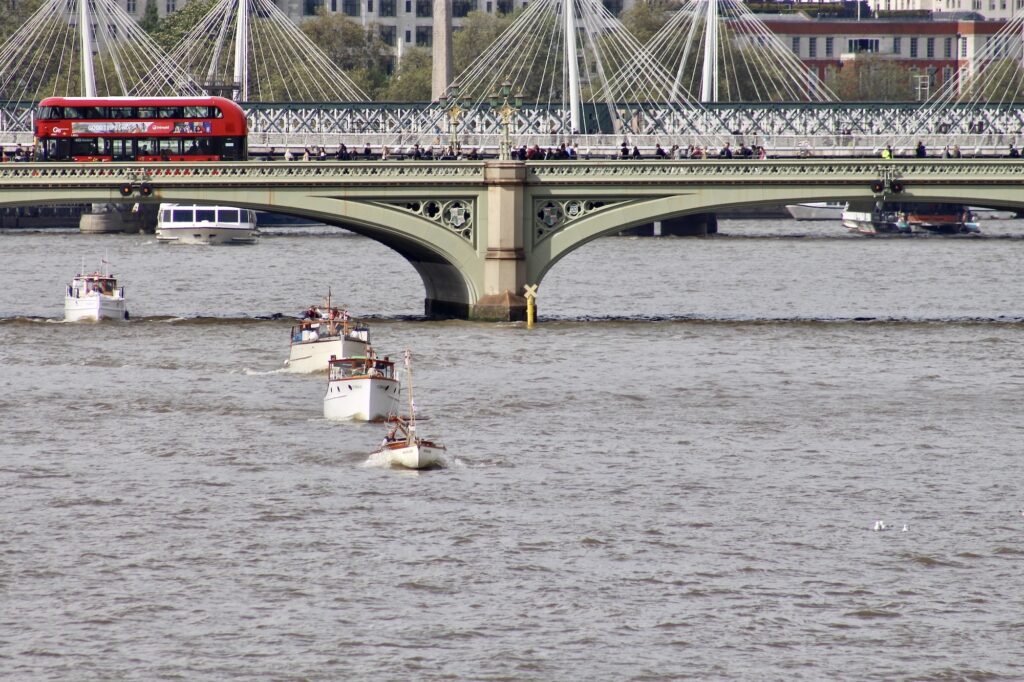
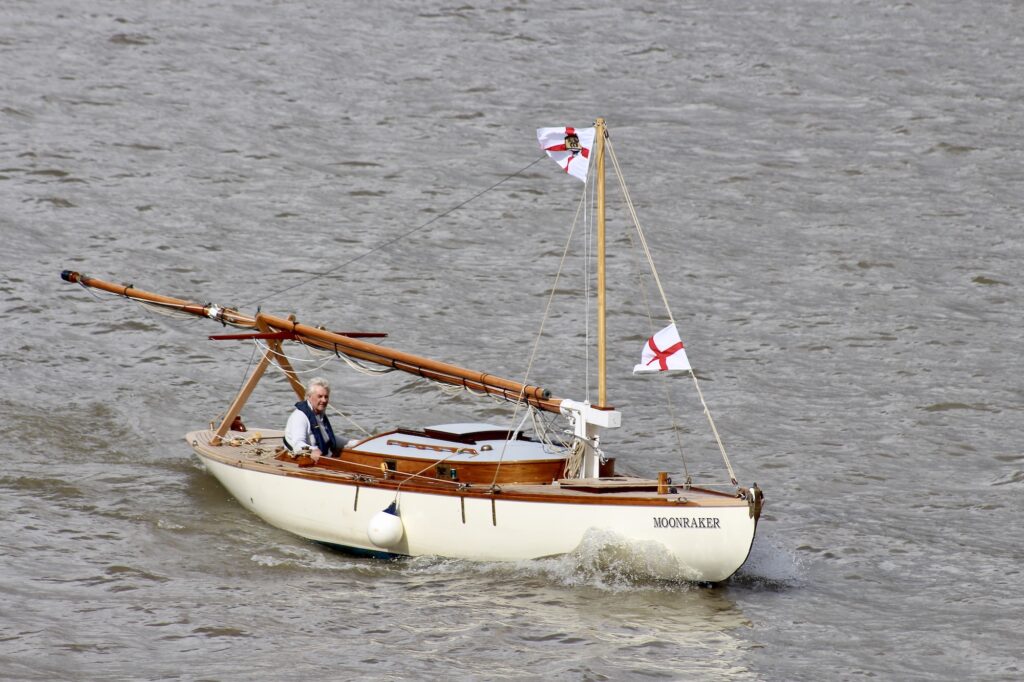

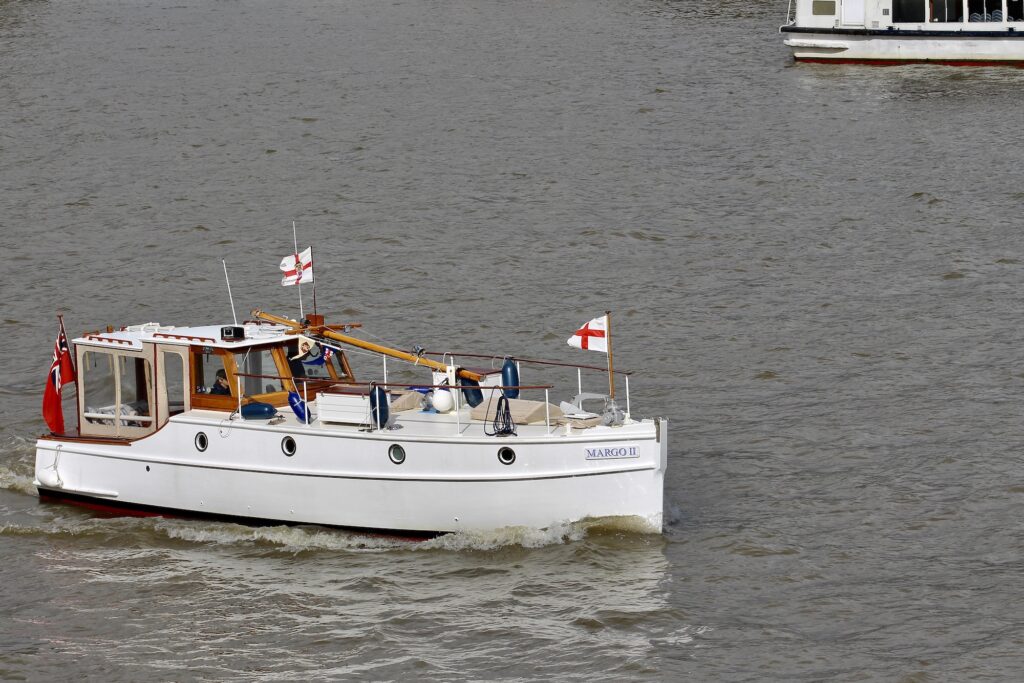
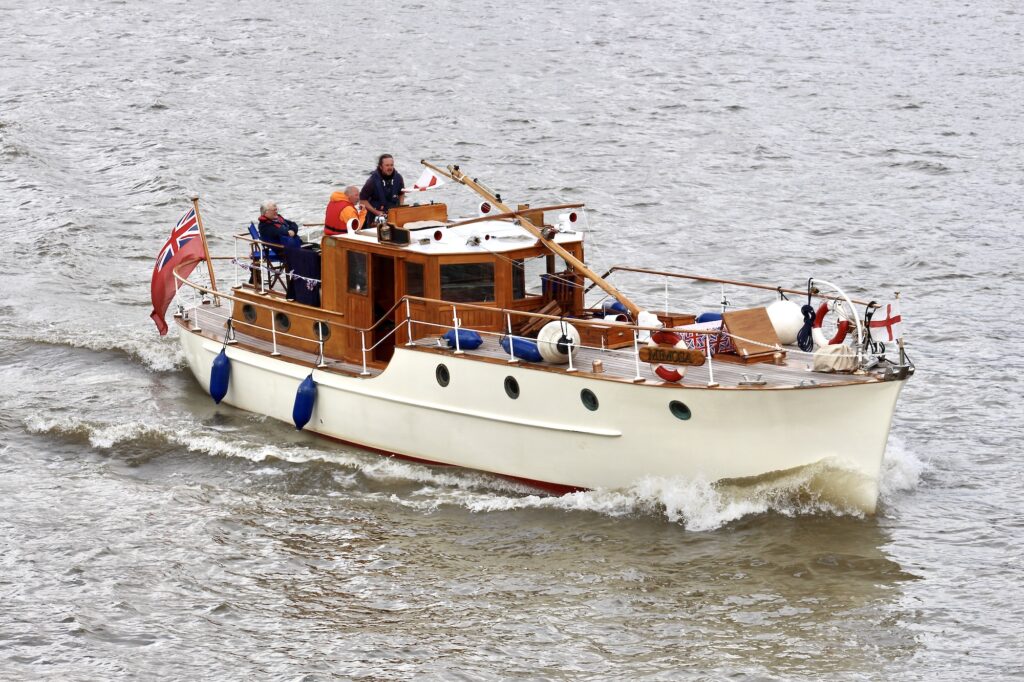
It’s clear that the Association of Dunkirk Little Ships is thriving, its members keen to preserve their classic boats and to share their history. They take part in a number of events during the year and you can discover their plans for 2023 on the link below. Among them they will be taking part in the 14th edition of the annual Classic Boat Festival, hosted by St. Katharine Docks Marina from September 9 to 10, 2023.
Sources and further information
Explore: The Association of Dunkirk Little Ships for details of those fateful days from May 30th – June 2nd, 1940; information about individual boats; and see Dunkirk Revisited by John Richards.
History and Stories: Operation Dynamo
Follow the Dunkirk Little Ships and St.Katharine Docks on Twitter: @Dunkirk_Ships @StKatsMarina
Also follow some of the boats photographed above:
Breda: @Breda1931
Lady of Mann: @mattcai96961678
Lady Lu/ Ian Gilbert: @Ladylou1936
Margo II: @Margo_II
Naiad Errant: @NaiadErrant

